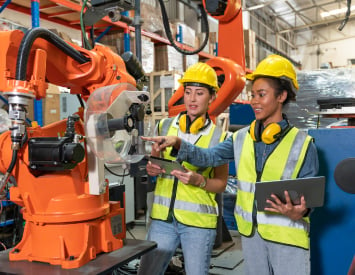With bee populations rapidly declining worldwide due to pesticide use, habitat loss, and climate change, the future of global food production is at risk. However, researchers at MIT have developed a groundbreaking technology: robotic bees. We explore the advancements in robotic bee technology and their possible applications in agriculture.
The alarming decline in bee populations over recent decades raises significant concerns for the future of agriculture.
Bees are vital for pollinating numerous crops, and without them, many of our cherished fruits, vegetables, and nuts could become increasingly challenging to cultivate.
A multitude of factors—including pesticide exposure, habitat loss, diseases, and climate change—have contributed to the dwindling numbers of these essential pollinators.
As natural pollinators face mounting pressures, scientists are turning to technology for solutions. Among the most promising innovations is the development of robotic bees designed to replicate the pollination work of their natural counterparts.
MIT researchers have made remarkable progress in creating these robotic insects, showcasing their potential contributions to pollination. While still in development, their capabilities point to a future where technology may play an essential role in ensuring food security and maintaining biodiversity.

A Breakthrough in Robotic Bee Design
MIT’s robotic bees mark a significant leap in the evolution of tiny flying machines. These new robots are more agile and capable than previous models, offering enhanced endurance, speed, and precision.
One notable advancement is their ability to hover for over 1,000 seconds—more than 100 times longer than earlier versions. This extended hover time allows for increased efficiency and versatility, enabling the robots to carry out intricate tasks with greater accuracy.
Kevin Chen, an associate professor in MIT’s Department of Electrical Engineering and Computer Science, stated, “The amount of flight we demonstrated in this paper is likely longer than the cumulative flight time our field has achieved with these robotic insects.”
This leap in performance opens exciting possibilities for assisted pollination, as robotic bees could help mitigate the loss of natural pollinators.
The robots are designed to execute acrobatic maneuvers, such as aerial flips and precise path-following, even spelling “M-I-T” in mid-air. These advanced control systems allow for refined movements and improved navigation of plants, flowers, and other targets.
The robots’ enhanced speed—reaching 35 cm/s—paired with their increased precision means they could eventually take on the essential role of pollination in controlled environments like greenhouses and urban vertical farms.
Overcoming Challenges in Robotic Pollination
Natural pollinators like bees excel at tasks that current robotic systems still struggle to replicate. The efficiency and precision of a bee’s flight result from complex muscle systems and biological mechanisms.
For robotic bees to match this level of sophistication, scientists must address challenges related to durability, flight stability, and control. MIT’s new design achieves significant progress by utilizing fewer wings and incorporating complex transmissions that reduce mechanical strain.
The latest robotic bee design features a split structure, with each half containing a single outward-flapping wing. This configuration enhances stability, minimizes wing interference, and creates additional space for electronics.
The team also developed new long wing hinges, improving the robot’s durability and reducing stress during flight. These advancements enable the robots to perform tasks that were previously difficult or impossible for robotic insects, such as extended hovering or complex aerial maneuvers.
“Compared to the old robot, we can now generate control torque three times larger than before, allowing us to execute highly sophisticated and accurate path-finding flights,” said Chen.
These enhancements provide researchers with hope that robots may soon be capable of landing on flowers with precision, effectively performing essential pollination tasks with an accuracy comparable to that of real bees.
Next-Generation Pollination Systems
The next phase of development will focus on further extending the robots’ flight capabilities. MIT researchers aim to increase the robots’ endurance to beyond 10,000 seconds while improving their ability to autonomously navigate real-world environments.
Equipped with small batteries and sensors, these robotic bees could fly independently, conducting pollination tasks in agricultural fields without constant human oversight.
One of the most exciting prospects for these robotic bees is their potential role in urban farming and multilevel agricultural environments. In densely populated areas with limited space, vertical farms could utilize robotic bees to efficiently pollinate crops with minimal environmental impact.

This innovation could bolster food production in areas where arable land is scarce and reduce dependence on traditional pollination methods.
Real-World Applications of Robotic Bees
Although still in the early stages, MIT’s robotic bees could soon have significant implications for agriculture. Here are three practical applications for these flying robots:
Pollination in Controlled Agricultural Settings: In environments like vertical farms and greenhouses, robotic bees could carry out precise pollination tasks where natural pollinators may be absent. By complementing the efforts of real bees, robotic insects could ensure that crops receive the necessary pollination, thereby enhancing yields and reducing pesticide usage.
Supporting Natural Pollinators: As bee populations dwindle, robotic bees could provide essential support to the remaining natural pollinators. These robots could be deployed in areas where bee populations struggle, filling the gap and ensuring vital crops receive proper pollination.
Pollination in Remote or Extreme Environments: In regions where natural pollinators cannot thrive, such as extreme climates or disaster-affected areas, robotic bees could perform pollination tasks. Their deployment could help restore agricultural activity and food production in regions facing environmental challenges.
Challenges Ahead and the Path Forward
Despite the significant advancements represented by MIT’s robotic bees, challenges remain.
Future research will prioritize refining the robots’ flight capabilities, extending battery life, and ensuring their durability in real-world environments. Scaling the technology for widespread agricultural adoption will require overcoming logistical challenges and ensuring that robotic bees can operate effectively alongside natural pollinators.
Nonetheless, MIT’s research signifies a promising step toward addressing the global pollination crisis.
References
Fewer bees and other pollinating insects lead to shrinking crops
MIT’s robot bees break pollination records with 1,000-second hover, flips and more


